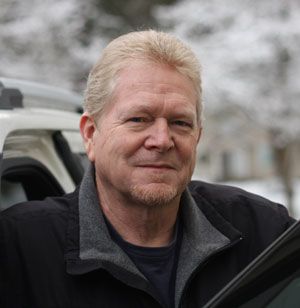Lane closure ahead
When a lane ahead “disappears,” requiring traffic to merge to adjacent lanes, it’s often anything but orderly. I’ve discussed here how the process regularly turns into one of conflict and anger, occasionally “regulated” by self-appointed referees who attempt to create order via traffic direction and lane blocking. Such actions only escalate the ire.
The correspondence I’ve received on the topic not only confirms the two factions (immediate mergers versus last-second mergers), but reveals the strength of their convictions. Most of the responses, nevertheless, favored using all available lanes until the merge is forced at the actual closure of the lane.
I tend to agree, with conditions. The only way to successfully use of all lanes, followed with an amiable merge, is to have everyone “on the same page.” In other words, laws, signage and public education must tout the desired merge etiquette. Otherwise, as soon as someone speeds past stopped traffic in the about-to-be-closed lane, someone who has already moved into that stopped traffic is going to take offense.
Reader J.E. has even written to Washington’s Department of Transportation about the subject, and shed light on the matter by writing, “As for the long-distance merging of lanes for construction, I recently shared some advice with the DOT: sign the merge to direct vehicles to fill both lanes during backups, alternating merges at the merge point. It doesn’t make the passage through the merge point any quicker, but it would solve the road rage blood pressure issues from contention about the open lane.”
He added, “The DOT’s response (through Marty Weed, who was very responsive) was that their hands are tied to a certain extent by national standards for signing lane closures. Marty did say that this is a situation that they are constantly looking to improve.”
J.E.’s suggested signage recommending use of the empty lane as long as possible would indeed serve to alleviate the anger of those who resent seeing vehicles there. Now, certain drivers will actually pull into the soon-closed lane to block others from using it.
Another reader, L.W., compared the dilemma to other countries. He wrote, “I have long been perplexed at the sloppiness of the lane merger process in the U.S. In Europe, the notice is much closer to the merge point. All vehicles stay in the lane they were in and merge only at the merge point, alternating as they continue moving forward (commonly called the zipper law). Traffic continues to flow, resulting in a much more efficient process. A side benefit is that there are no enraged drivers.”
As L.W. suggests, using both lanes until unavailable, followed by the cooperative, one-by-one, “zipper” merge is likely the most efficient, or at least the most orderly, way to go. Again, to accomplish that, everyone needs to be acting in the same manner, using the same set of rules. With the way things are now, the two factions (early and late closed-lane abandoners) are always at odds. If a procedure were widely and officially publicized, things might improve.
I also concur with L.W. (and previous reader comments stating the same) that excessively early lane closure warnings aid in forming the two factions (early and late mergers) and give drivers more time to “misbehave” by blocking, shoulder driving, et cetera. As J.E. implied, it’s problematic during dense backups; if traffic were always light, merges could be made anytime without conflict.
But alas, I tend to be among the early closed-lane departers. Though I don’t necessarily believe that is the optimum course of action, in the absence of the specifying signage J.E. suggests, I do it to avoid the conflict. That conflict, involving “jealous” drivers seeing others drive past them after they have merged and again when trying to blend in at the last possible moment among those who merged early, is inevitable.
If you are an early merger, try to ignore those who opt to wait longer. At the very least, don’t direct anger toward them and definitely resist the urge to block the lane.
The DOT told J.E. that they are constantly looking to improve the situation. Let’s hope that happens!
Readers may contact Bill Love via e-mail at precisiondriving@spokesman.com.
